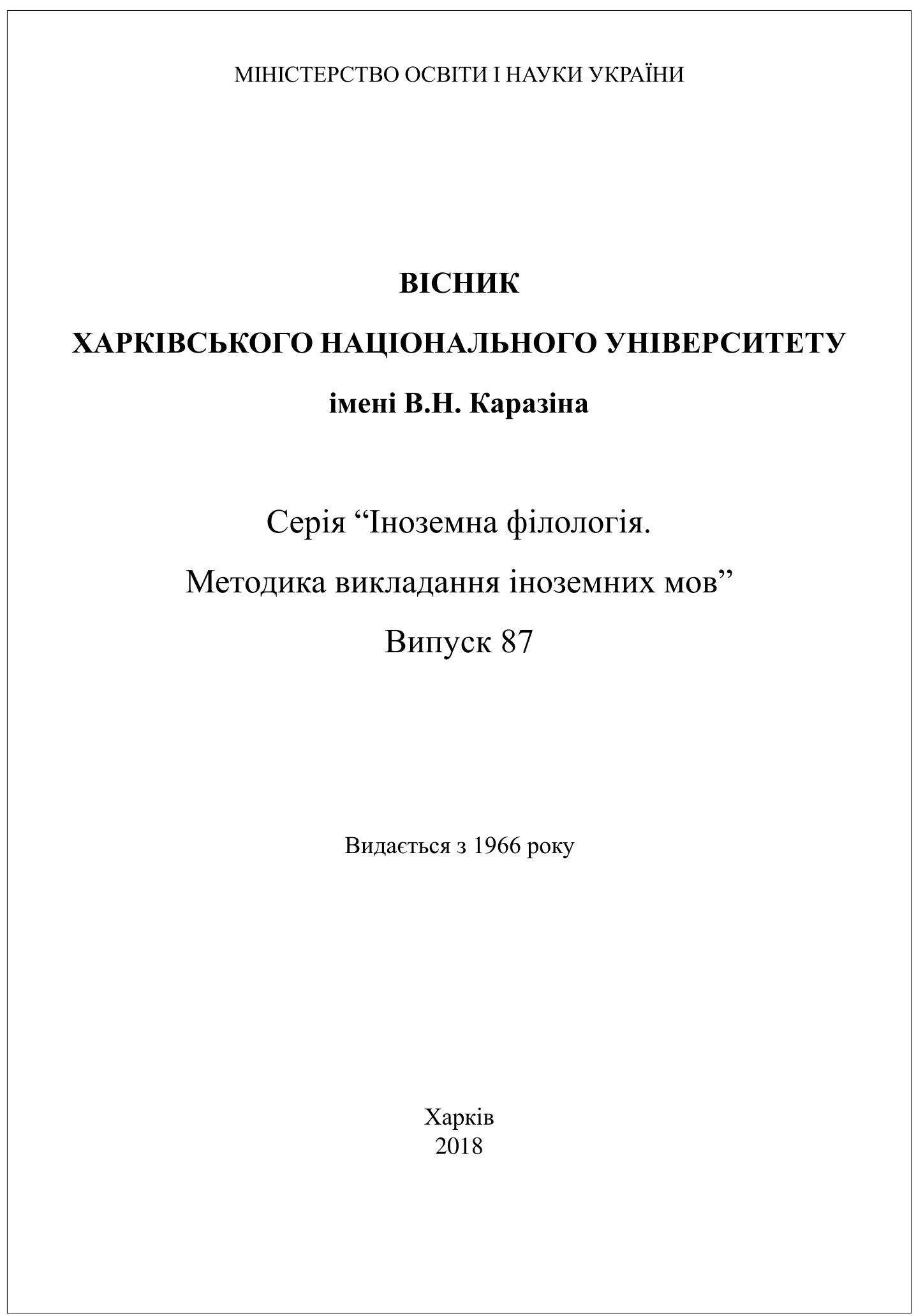Типологія стратегій неввічливості у дискурсі В. Шекспіра
Анотація
У статті на когнітивно-комунікативних засадах виокремлено стратегії неввічливості в драматургічному дискурсі В. Шекспіра та надано їх типологію. Узагальнено параметри аналізу стратегій неввічливості та обґрунтовано необхідність залучення поняття інтерсуб’єктивності до методологічної бази дослідження стратегій неввічливості. За параметрами ситуативності, інтенційності, обличчя, комунікативної норми та емоційності перлокуції встановлено провідні типи стратегій неввічливості в драматургічних творах В. Шекспіра: стратегія втручання з тактиками порушення існуючого стану речей і навмисного заподіяння шкоди; стратегія нав’язування з тактиками надмірної та безпідставної самовпевненості, непомірності та морального перебільшення, нешанобливого ставлення, безсоромності, егоїзму та себелюбства; стратегія недопустимого виключення слухача з тактиками неприйняття, дистанціювання/відмежування, уникання розмови або неможливості розмовляти, недружелюбності, ворожості, байдужості, нечутливості, навмисного нехтування почуттів інших; стратегія знецінення слухача з тактиками приниження і критикування; стратегія порушення норми з тактиками порушення норм етики, естетики та раціональності; стратегія удаваної неввічливості із тактиками сарказму, недоречної грайливості та подекуди недоброзичливого кепкування. У статті також наведено когнітивно-прагматичні характеристики окремих типів стратегій неввічливості, описано мовні засоби їх реалізації в дискурсі. Виокремлено найбільш частотні стратегії неввічливості у шекспірівських драмах та наголошено на можливості одночасного використання декількох стратегій в межах однієї комунікативної ситуації.
Завантаження
Посилання
Beebe, L.M. (1995). Polite fictions: Instrumental rudeness as pragmatic competence. In: J. Alatis (ed.). Linguistics and the Education of Language Teachers: Ethnolinguistics, Psycholinguistics and Sociolinguistic Aspects. Georgetown: Georgetown University Press, pp. 154–168.
Bondarenko, E.V., Martynjuk, A.P., Frolova, I.E., and Shevchenko, I.S. (2017). Kak narisovat' portret pticy: metodologija kognitivno-kommunikativnogo analiza jazika [How to draw a portrait of a bird: cognitive and communicative approach to language analysis]. Kharkiv: KhNU imeni V.N. Karazina Publ.
Bousfield, D. (2008) Impoliteness in Interaction. Philadelphia and Amsterdam: John Bejamins.
Brown, G., and Gilman, A. (1989). Politeness theory and Shakespeare’s four major tragedies. Language in society, 5(18), 159–212.
Crime and Disorder Act 1998. Section 1. Available at: https://www.legislation.gov.uk/ukpga/ 1998/37/section/1.
Culpeper, J. (2005). Impoliteness and the Weakest Link. Journal of Politeness Research, 1(1), 35–72.
Eelen, G. (2001). A critique of politeness theories. Manchester: St. Jerome Publishing.
Fraser, B. (1999). Whither Politeness? Plenary paper given at the International Symposium on Linguistic Politeness, Chulalongkhorn University, Bangkok, Thailand, 7-9 December 1999.
Fraser, B., and Nolen, W. (1981). The association of deference with linguistic form. International Journal of the Sociology of Language, 27, 93–109.
Frolova, I.Je. (2009). Strategija konfrontacii' v anglomovnomu dyskursi [Confrontation strategy in English discourse]. Kharkiv: KhNU imeni V.N. Karazina Publ.
Goffman, I. (1967). Interaction ritual. Chicago: Aldine Publishing.
Haugh, M. (2015). Im/politeness implicatures. Berlin: Mouton de Gruyter.
Kádár, D.Z., and Haugh, M. (2013). Understanding politeness. Cambridge: CUP.
Holmes, J., Marra, M., and Schnurr, S. (2008). Impoliteness and Ethnicity: Maori and Pakeha discourse in New Zealand workplaces. Journal of Politeness Research: Language, Behaviour, Culture, 4(2), 193–219.
Kienpointner, M. (1997). Varieties of rudeness: Types and functions of impolite utterances. Functions of Language, 4(2), 251–287.
Kopytko, R. (1993). Polite discourse in Shakespeare’s English. Poznan: Wydawnictwo naukowe universitety im. Adama Mickiewicza Publ.
Lakoff, R. (1989). The limits of politeness: Therapeutic and courtroom discourse. Multilingua, 8(2-3), 101–129.
Rimal, R.N., and Real, K. (2005). How behaviors are influenced by perceived norms: A test of the theory of normative social behaviour. Communication Research, 32(3), 389–414.
Ruhi, S. (2008). Intentionality, communicative intentions and the implication of impoliteness. Intercultural Pragmatics, 5(3), 287–314.
Shevchenko, I.S. (2016). Jevoljucionnye mehanizmy kognitivnoj semantiki [Evolutionary mechanisms of cognitive semantics]. Kognicija, Kommunikacija, Diskurs. – Cognition, Communication, Discourse, 13, 131–141 (in Russian).
Spencer-Oatey, H.D.M. (2005). (Im)Politeness, face and perceptions of rapport: Unpackaging their bases and interrelationships. Journal of Politeness Research: Language, Behavior, Culture, 1(1), 95–119.
Tedeschi, J.T., and Felson, R.B. (1994). Violence, Aggression and Coercive Actions. Washington DC: American Psychological Association.
Terkourafi, M. (2008). Towards a unified theory of politeness, impoliteness, and rudeness. In: D. Bousfield, and M. Locher (eds.). Impoliteness in Language: Studies on its Interplay with Power in Theory and Practice. Berlin and New York: Mouton de Gruyter, pp. 45–74.
Watts, R. J. (2003). Politeness. Cambridge: CUP.




